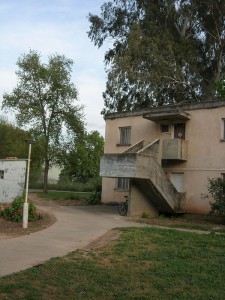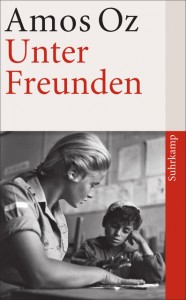A Birthday Tribute to an Inquisitive Storyteller
On the occasion of his 75th birthday on 4 May, we wish to congratulate Amos Oz, a great writer who visited the Jewish Museum Berlin no less than twice last year. The award-winning Israeli author—he has received, inter alia, the Peace Prize of the German Book Trade (1992) and, more recently, the Franz Kafka Prize for Literature (2013)—and his daughter, the historian Fania Oz-Salzberger, presented their jointly written book Jews and Words (2012) here last October. In four highly entertaining chapters, “secular Jewish Israelis” draw on the genealogy of reading and writing to trace historical continuity in Jewish traditions. They ask which female poet may have penned the Song of Solomon, reflect on other “vocal women,” and philosophize on matters such as the importance of time and the interplay of collectivism and individuality.
In March 2013, Amos Oz paid a visit to the Museum wearing his literary author’s hat, so to speak, to present his latest publication Between Friends (2013, Hebr. original Be’in Khaverim 2012). The eight interconnected short stories in the volume are set in the fictitious Kibbutz Yekhat and immediately attest the author’s familiarity with kibbutz life. Oz left his intellectual father’s home for a kibbutz at the age of fourteen and a half, and lived and worked there for three decades. His descriptions of typical kibbutz settings—the communal laundry, kitchen, and dining room, the cowsheds and chicken coops, huge orchards and swimming pool—instantly made me feel at home, too, since I lived for a while on a kibbutz in the late 1990s. Discussions at Yekhat about the children’s house, on the other hand, situate the action specifically in the 1950s, the Golden Age of kibbutzim.
The stories deal with the universal constants of human nature: love, loneliness, and the struggle to make major decisions in life. The story “Between Friends,” which lends its title to the collection, tells of the confusion felt by the character Nahum when his daughter begins an affair with her teacher—a man who is one of the founders and leading figures of the kibbutz, as well as a close friend of Nahum. The concerned father doesn’t fly into a rage, as expected, but instead concludes that, “love is a kind of infection, possessing then releasing you.”
The sympathetic kibbutz secretary Yoav Karni, around whom the story “At Night” revolves, draws attention to the difficulties of friendship in the kibbutz context, saying, “We’re all supposed to be friends but very few really are.” The term khaverim used in the original Hebrew edition means not only “friends” but also “comrades” and “members.” Yoav goes on to reflect that a lonely, aging bachelor had a harder time here than he would in other places because kibbutz society offered no remedies for loneliness. In fact, the very idea of a kibbutz denied the concept of loneliness.
This idea is the backdrop to the author’s portrayal of the individual kibbutz members’ lives. Characters central to one story pop up in others as secondary characters and so become increasingly familiar to us. Their lives prove that the ideological goal of equality cannot wipe out differences between people.
As in Jews and Words, where father and daughter emphasize that “the Jewish model of intergenerational conversation merits close attention,” this collection of stories repeatedly addresses the generation gap. It highlights the changes that were taking place in kibbutzim when the founding generation was ceding place to its offspring, whose lives are shaped not by the principles of socialism but by a desire for individual freedom. In addition to characters who bemoan such changes as a sign of decline there are those who put their hope in future generations, in “people with patience, doubts, and mercy.” Putting hope in language—in the clear, unambiguous, and melodious words that could heal the relationship between people, as the narrator puts it—is likewise expressed in the collection, but the reference, perhaps ironically, is to the little known language Esperanto. In any case in the German edition that I had the pleasure to read, translator Mirjam Pressler rendered Oz’s original Hebrew stories in a spare, clear German full of melodious words—as melodious as the flute played by Oz’ wife at his reading here at the Jewish Museum Berlin.
Mirjam Bitter, Media
Amos Oz, Between Friends, translated from the Hebrew by Sondra Silverston, New York: Houghton Mifflin Harcourt 2013, 192 pp. [German version: Unter Freunden, translated from the Hebrew by Mirjam Pressler, Berlin: Suhrkamp 2013, 216 pp.]
Amos Oz und Fania Oz-Salzberger, Jews and Words, a companion volume to the Posen Library of Jewish Culture and Civilization, New Haven and London: Yale University Press 2012, 248 pp. [German version: Juden und Worte, translated from the English by Eva-Maria Thimme, Berlin: Jüdischer Verlag im Suhrkamp Verlag 2013, 286 pp.]




